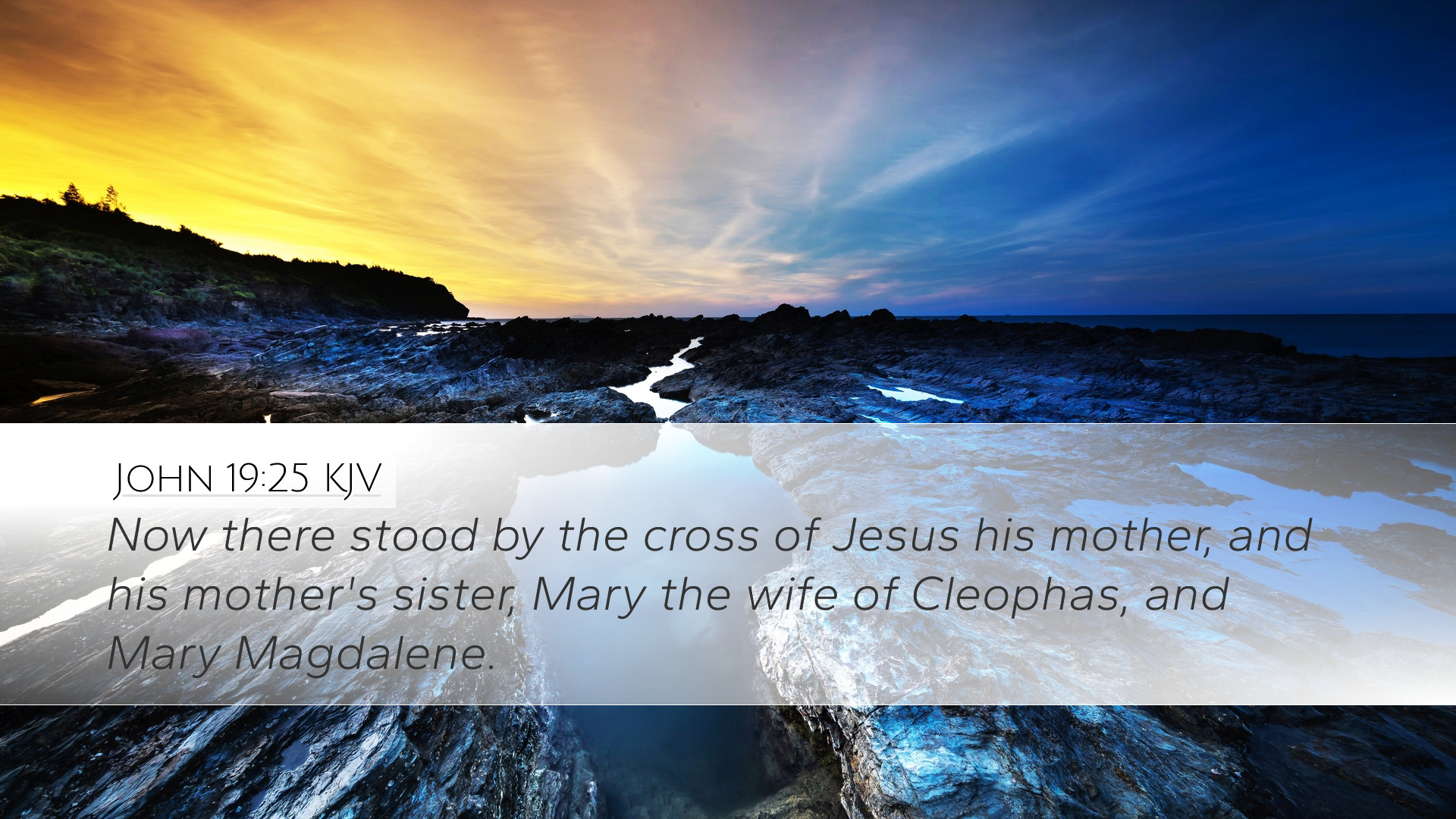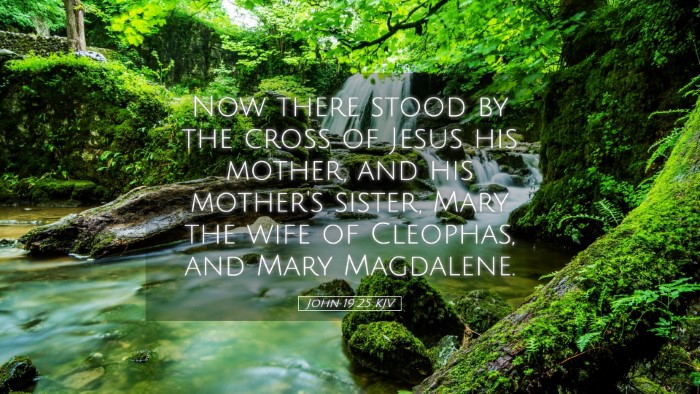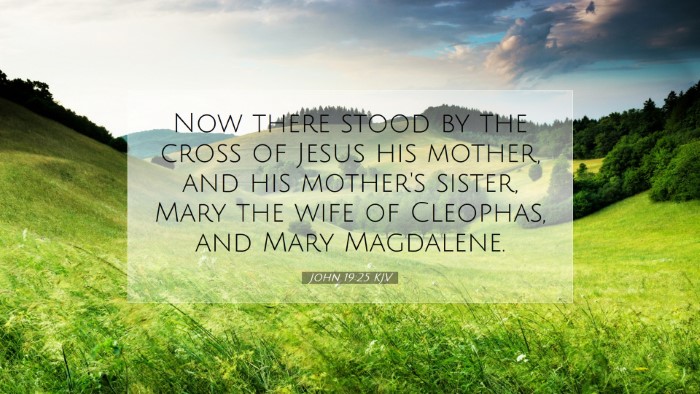Commentary on John 19:25
Bible Verse: John 19:25 - "Now there stood by the cross of Jesus His mother, and His mother's sister, Mary the wife of Clopas, and Mary Magdalene."
Context and Significance
The crucifixion of Jesus is a pivotal moment in Christian theology, embodying both the depths of human suffering and the heights of divine love. John 19:25 recounts a poignant scene at the foot of the cross, where several women, particularly Jesus' mother, are present in the midst of His agonizing sacrifice. The emotional and theological weight of this moment resonates throughout Christian history.
Witness and Devotion
-
Presence of Mary:
Mary, the mother of Jesus, stands as a figure of profound devotion. Matthew Henry highlights her resilient faith as she witnesses the fulfillment of prophecy juxtaposed with her personal agony. Her presence underscores the intimate relationship between pain and grace—the inextricable bond between the human experience of suffering and the divine purpose of redemption.
-
Other Women Present:
Alongside Mary, other women such as Mary Magdalene and 'Mary the wife of Clopas' are identified. Adam Clarke emphasizes the significance of their presence, suggesting that their loyalty is a stark contrast to the male disciples who fled. This reflects a broader theme in the Gospel narratives, where women often embody steadfast faith in dire circumstances.
Theological Implications
The crucifixion scenes in the Gospels serve to illustrate multifaceted theological truths. Albert Barnes notes that the inclusion of women at the cross signifies a breaking of societal norms, emphasizing the role of marginalized figures in God’s redemptive plan. Their presence serves as a reminder that the message of Christ’s sacrifice transcends gender barriers and speaks to all of humanity’s need for grace.
Mary’s Suffering and Role
Mary's sorrow at the cross reveals the deep emotional reality of a mother watching her son endure unthinkable suffering. Matthew Henry elaborates on the theme of maternal anguish, echoing the prophecy of Simeon in Luke 2:35, where it was foretold that a sword would pierce her soul. This illustrates the fulfillment of prophetic scriptures and reinforces the idea that suffering is part of the divine narrative of redemption.
Contrast with the Disciples
The stark contrast between the women at the cross and the absent male disciples (most notably Peter and John, who will later rejoin) speaks volumes to the varying responses to crisis and suffering. Clarke posits that the courage demonstrated by the women offers a call to all believers to remain faithful in times of trial. Their unwavering presence contrasts the fear that led to the disciples' retreat, serving as a powerful example of devotion and faithfulness.
Redemptive Foreshadowing
John’s Gospel continually emphasizes the theme of “glory through suffering.” In this moment, the presence of Mary and the other women foreshadows the profound impact that Christ's death would have on future generations. Their future roles in the resurrection narrative further underline women’s essential part in the story of redemption; Mary Magdalene, in particular, is called to announce the resurrection, the ultimate victory over death.
Conclusion
John 19:25 invites pastors, theologians, and students to reflect not just on the suffering of Christ but also on the presence of witnesses who embody faith during profound suffering. The women at the foot of the cross remind us of the transformative power of unwavering commitment to Christ amid trials. Their example challenges all believers to stand firm, reflect deeply on the mysteries of faith, and embrace the call to be witnesses of God's redemptive work in Christ.


